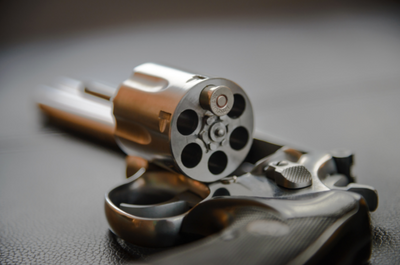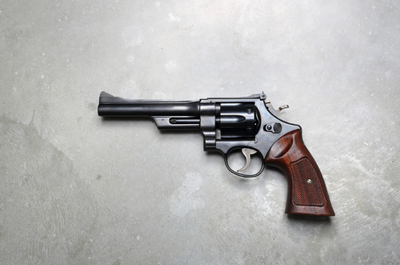So you’ve decided to carry a handgun for self-defense. Good decision! The Second Amendment doesn’t grant you the right to defend yourself with a firearm. It merely acknowledges that the Creator already gave it to you.
In addition to receiving whichever permit your state might require you to get before carrying a handgun, you need to decide which kind of pistol you want: a revolver, or a semi-automatic. You can pick which brand of firearm, which type of ammunition to load it with, and which 2nd Amendment Shirt to wear after you’ve decided between a revolver and semi-auto.
To be sure, not all handguns are revolvers or semi-autos. Take the derringer, for example, which stores its ammunition in its fixed chambers when it is loaded. It’s a decent choice for personal protection thanks to its small size, although it affords you only one or two chances to actually hit the threat. Likewise, a bolt-action pistol lacks a cylinder or self-loading system. It’s accurate, yet its bulky size and slow rate of fire make it an impractical choice for everyday carry.
In any event, your first choice of handgun for everyday carry really ought to be a revolver or semi-auto. Let’s briefly go over the pros and cons of both so you can make an informed choice!

Should You Carry a Revolver for Self-Defense?
The revolver’s design is much older than that of the semi-auto, but it is still extremely popular for self-defense. Which features have kept the revolver from becoming obsolete?
Revolver Pros:
- Reliable design. A revolver typically has five or six chambers, each of which stores a cartridge. Every time a revolver fires a shot, its cylinder rotates to bring a new cartridge behind the barrel. This simple mechanical action is highly reliable and poses virtually no threat of a feeding jam. And even if you encounter a dud, you’ll be able to quickly fire the next round in the chamber.
- Easy to operate. A double-action revolver requires the shooter to do only one thing in order to fire: pull the trigger. That makes the revolver a good choice for a novice shooter, as well as one who may be too nervous to attend to complicated tasks while their life is in jeopardy.
- More powerful ammo. A revolver’s solid design means it is able to fire more powerful cartridges than a semi-auto. But in all fairness, the most powerful revolvers cartridges produce far too much recoil for effective self-defense. Immensely powerful revolver cartridges like the 454 Casull and 500 S&W Magnum are really only practical for defense against bears.

Revolver Cons:
- Limited capacity. With rare exceptions, a revolver’s cylinder holds six rounds of ammunition at most. It is entirely within the realm of possibility that you will need to fire more than six shots during a life-threatening altercation.
- Slower reload speed. Reloading a revolver requires swinging out the cylinder, ejecting the empty cases, and loading new cartridges into its open chambers. Devices like speedloaders and moon clips do facilitate faster reloading, but they also require practice to use quickly.
- Stronger trigger pull. The triggers on most revolvers require relatively more force for ignition. Even a weak finger can fully squeeze the trigger on any revolver, but that tension can make aiming more difficult without training.
Should You Carry a Semi-Automatic for Self-Defense?
The semi-auto is the more modern and more popular type of handgun. It stores cartridges in a magazine, and uses the force generated by ignition to replace the empty case in its chamber with a new cartridge.
Semi-Auto Pros:
- Faster rate of fire. There are experienced marksmen who can accurately fire all six shots in a revolver in under two seconds, but a semi-auto makes rapid fire far more accessible to novices.
- Faster reload speed. A revolver stores its ammunition in a detachable box magazine. To reload it, you only have to eject the empty magazine and insert a new one. (Naturally, you have to carry or have access to multiple magazines to take advantage of this performance advantage.)
- Easier to carry. While easily concealed subcompact revolvers do exist, semi-autos typically have narrower profiles and weigh less.
- Greater ammo capacity. Semi-autos store far more rounds in their magazines. For example, a Glock 17’s standard magazine capacity is 17 rounds (and much larger magazines are also available).

Semi-Auto Cons:
- Less reliable design. A high-quality and well-maintained semi-auto is a reliable piece of hardware. Still, its greater number of moving parts and higher chance of jamming do make the semi-auto inherently less reliable than a revolver.
- Greater maintenance. Although maintaining a semi-auto requires very little time and effort, it still needs more frequent attention than a revolver in order to remain dependable enough for the all-important job of self-defense.
Ultimately, the handgun you feel most comfortable firing is your best choice for personal protection. Try revolvers and semi-autos out at the range before committing to one or the other. Select whichever you prefer and learn how to compensate for its relative disadvantages!
